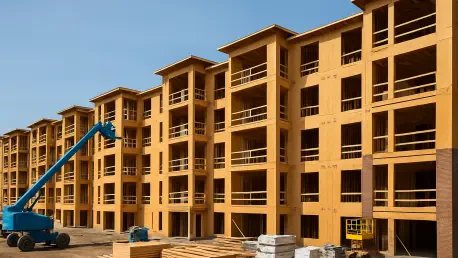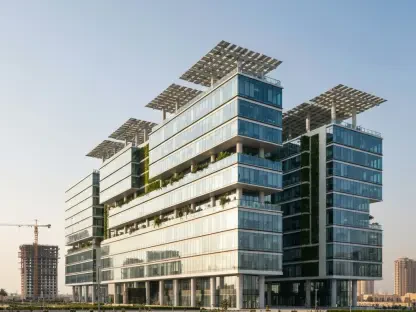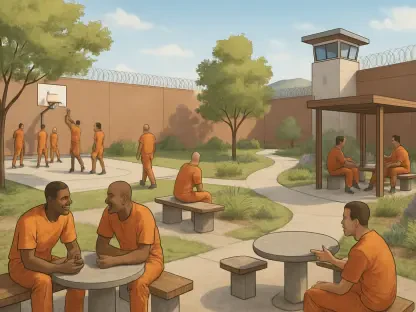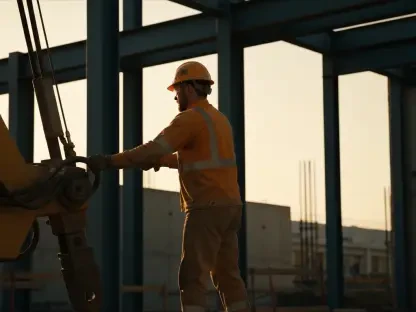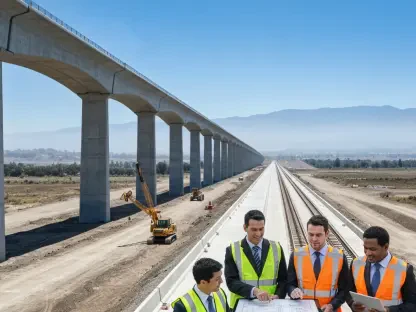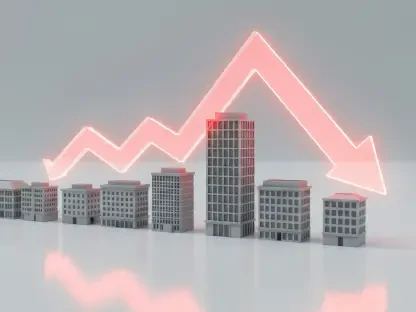In a surprising turn for the U.S. housing market, housing starts have soared to a five-month peak of 1.428 million units in July on a seasonally adjusted annual basis, as reported by the U.S. Census Bureau. This marks a 5.2% increase from June’s 1.358 million units and a remarkable 12.9% jump compared to the same month last year, surpassing economists’ expectations of a more conservative 1.29 million starts. The primary catalyst behind this unexpected growth is the multifamily housing sector, which recorded an impressive 11.6% surge in starts for buildings with five or more units. This boom raises critical questions about the forces driving this trend and its implications for a housing landscape marked by persistent challenges. While single-family starts saw a more modest uptick of 2.8%, the emphasis on multifamily construction appears to reflect a strategic response to evolving demands. Amid ongoing affordability issues and a chronic shortage of homes, this development signals a potential shift in how builders are addressing the needs of renters and buyers alike in an increasingly complex market environment.
Unpacking the Multifamily Surge
The dramatic 11.6% rise in multifamily housing starts underscores a significant adaptation to current economic conditions and consumer preferences within the U.S. housing sector. High mortgage rates and elevated home prices have pushed many potential buyers out of the market for single-family homes, leading to a growing reliance on rental options or more compact living arrangements in urban areas. Multifamily projects, which often require less land and can be developed at a lower cost per unit, are proving to be an attractive solution for builders looking to meet this demand. This trend is particularly pronounced in densely populated regions where space constraints and the need for affordable housing options are most acute, highlighting how builders are aligning their strategies with the realities of a market where traditional homeownership is becoming less attainable for many.
Beyond economic pressures, the surge in multifamily construction also reflects broader societal shifts that are reshaping housing needs across the country. Younger generations and smaller households are increasingly prioritizing flexibility and proximity to urban amenities over the conventional suburban single-family home model. This demographic change, coupled with a persistent undersupply of rental units in many cities, has created fertile ground for multifamily developments to flourish. Builders are responding by focusing on projects that can accommodate higher density, often integrating mixed-use features to appeal to tenants seeking both convenience and community. However, while this focus addresses immediate demand in certain segments, it leaves unanswered the question of how the industry will tackle the enduring shortage of single-family homes critical for other demographics.
Mixed Signals in Construction Metrics
Despite the encouraging rise in housing starts, a closer look at other indicators reveals a more nuanced picture of the industry’s health. Residential permits, which serve as a forward-looking measure of construction activity, declined by 2.8% in July to 1.354 million units from a revised 1.393 million in June. Economists had anticipated a figure closer to 1.386 million, making this drop a potential warning sign of waning momentum. The divergence between robust starts and declining permits suggests that while builders are currently accelerating projects, there may be underlying hesitations or barriers—such as financing difficulties or rising input costs—that are dampening enthusiasm for future developments. This discrepancy raises concerns about the sustainability of the current uptick in construction activity.
Further complicating the outlook is the possibility that external factors are influencing builders’ long-term planning. Market uncertainties, including fluctuating interest rates and unpredictable material costs, could be prompting a more cautious approach to securing permits for new projects. Additionally, regional disparities in demand and regulatory environments may be contributing to this uneven trend, with some areas experiencing stronger growth in starts while others lag behind in permit approvals. For stakeholders in the housing market, this mixed data underscores the importance of monitoring both immediate activity and leading indicators to gauge whether the recent surge in starts can be maintained over time. Without a corresponding recovery in permits, the industry risks facing a slowdown that could exacerbate the existing housing shortage.
Builder Confidence and Market Pressures
Builder sentiment continues to reflect a challenging environment, with confidence remaining in negative territory for 16 consecutive months, according to a survey conducted by the National Association of Home Builders (NAHB) and Wells Fargo. This prolonged pessimism is driven by persistent supply-side issues, including shortages of skilled labor, escalating costs of construction materials, and complex regulatory hurdles that slow down project timelines. These constraints are particularly burdensome for smaller builders who lack the resources to absorb such pressures, further dampening overall industry morale. The ongoing difficulties highlight a structural challenge that must be addressed to support sustained growth in housing construction.
Compounding these internal challenges is the external pressure from a growing inventory of resale homes, which intensifies competition in an already tight market. To counteract this and stimulate buyer interest, a significant 66% of builders reported using sales incentives in August, up from 62% in the prior month. These incentives, ranging from price reductions to financing assistance, represent a strategic effort to navigate affordability barriers that deter potential buyers. However, such measures also signal the depth of the competitive landscape and the extent to which builders must go to secure sales. While these tactics may provide short-term relief, they are unlikely to resolve the deeper systemic issues of cost and supply that continue to weigh on the sector, suggesting a need for broader solutions to bolster builder confidence.
Affordability as a Central Obstacle
At the heart of the housing market’s struggles lies the persistent issue of affordability, particularly for single-family homes, which remain out of reach for many Americans. As noted by First American’s Deputy Chief Economist Odeta Kushi, meaningful progress in this area—whether through lower interest rates, reduced construction expenses, or enhanced buyer purchasing power—is essential for a robust recovery in single-family construction. Without such improvements, the industry’s ability to meet the needs of growing families and first-time buyers remains severely constrained. This affordability crisis not only limits individual homeownership opportunities but also perpetuates the broader housing shortage that has plagued the market for years.
The focus on multifamily starts, while a pragmatic response to affordability challenges, does not fully address the demand for single-family homes that form the backbone of many communities. High home prices and borrowing costs continue to sideline entry-level buyers, pushing them toward rental markets or delaying homeownership indefinitely. This dynamic has broader economic implications, as reduced homeownership can impact wealth-building opportunities for households. For builders, the affordability barrier necessitates innovative approaches, such as modular construction or partnerships with local governments to reduce costs. Until these challenges are met with effective solutions, the outlook for a balanced recovery across all housing segments remains uncertain.
Industry Shifts and Future Implications
The pronounced disparity between the 11.6% growth in multifamily starts and the modest 2.8% increase in single-family starts points to a deliberate strategic shift within the construction industry. Builders are increasingly prioritizing multifamily projects to capitalize on cost efficiencies and cater to a market where economic uncertainty and high homeownership costs drive demand for rental housing. This pivot aligns with the needs of urban dwellers and younger demographics who value affordability and location over traditional homeownership. Yet, as Kushi aptly states, “more hammers at work” are needed to build the homes still in short supply, particularly single-family units that remain critical for addressing the structural undersupply affecting a significant portion of the population.
Looking ahead, the industry’s focus on multifamily construction offers a partial solution but leaves unresolved the deeper challenge of single-family home shortages. The recent surge in starts provided a much-needed boost, but sustaining this momentum will require tackling affordability and supply-side constraints head-on. Reflecting on the data, the decline in permits and low builder sentiment cast a shadow over the long-term outlook, suggesting that the path forward is fraught with obstacles. To build on this progress, policymakers and industry leaders must prioritize collaborative efforts—whether through targeted incentives, streamlined regulations, or innovative building practices—to ensure that the housing market can meet diverse needs. The steps taken in response to these challenges will shape the foundation for a more resilient and inclusive housing landscape in the months to come.
